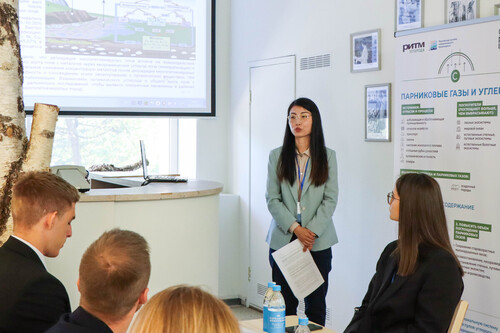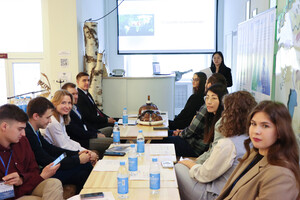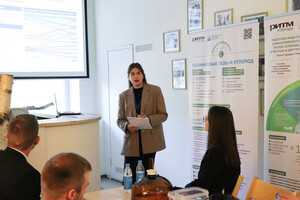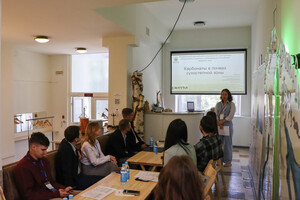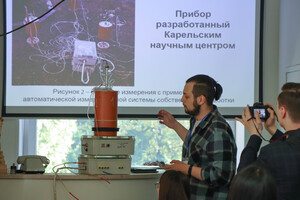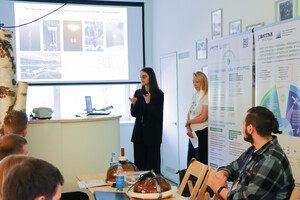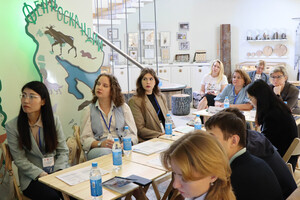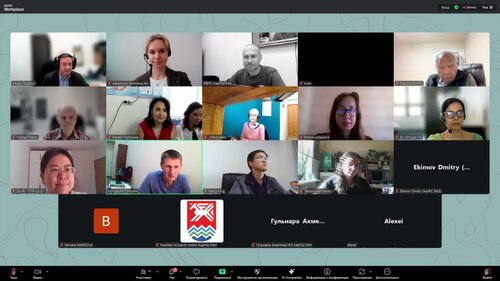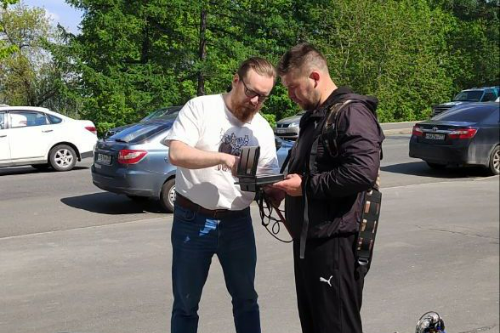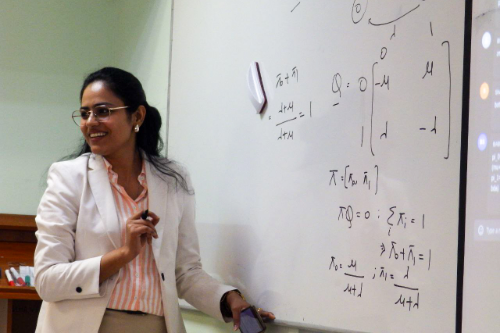Research Engineer at the Laboratory for Ecological Monitoring and Modeling of the Department for Multidisciplinary Research KarRC RAS Dmitry Bortsov presented the AUGP-23 gas analyzer. The device measures carbon stocks in soil and its transfer from soil to the atmosphere. The device is connected to a special application - after analysis, the data can be displayed on cell phone screen already in the field. The gas analyzer was designed by Karelian researchers, and the model is continuously calibrated and upgraded.
A presentation on monitoring of carbon stocks and greenhouse gas fluxes in lakes of Karelia was given by Yulia Novikova, PhD student, Junior Researcher at the Laboratory of Geography and Hydrology of the Northern Water Problems Institute (NWPI) KarRC RAS and Irina Morozova, Junior Researcher at the Bottom Sediments Research Group of NWPI KarRC RAS. The researchers presented a methodology for measuring hydrophysical parameters and methane emissions in Lake Chudesnaya Lamba in the Kivach Nature Reserve. The team at NWPI KarRC RAS researches the topic “Development of a system for monitoring carbon pools and greenhouse gas fluxes in aquatic ecosystems of North European Russia” within the key innovative project of national importance “Unified national system for monitoring climate-active substances”.
Methane in the air is sampled using original design traps. The trapping chamber is a plastic hemisphere of 6.4 liter volume with a 633 cm2 base area. The trapping chamber for benthic sampling looks like a similar hemisphere of 8.7 l volume with a base area of 616 cm2, with a gas collection tank in the upper part and weights around the perimeter in the lower part of the chamber.

Traps for sampling over water surface and near the bottom. Photos by staff of NWPI KarRC RAS
The scientists determined the duration of the periods of greenhouse gas accumulation and emission intensification. Methane distribution in water is uneven. Its concentrations are lowest in the surface water layer and the highest near the bottom.
— The irregularity of the gas distribution in water is due to its release from bottom sediments, — explained Irina Morozova.
Victor Mironov, Researcher at the Mire Ecosystems Laboratory of the Institute of Biology KarRC RAS, reported the results of long-term monitoring of Sphagnum moss growth. The scientist presented the dependence of the growth rate of Sphagnum riparium on the ambient temperature. It was found that temperatures in May and September can potentially control carbon uptake by peatlands in the next season. However, further research is needed to understand their regulatory function.
A total of 11 presentations were delivered at the workshop. The topics included harnessing technology to reduce greenhouse gas emissions during intensive livestock farming, estimation of the carbon and methane footprint of liquefied natural gas supply, and others. Presentations of guests from Volgograd were devoted to quantification of carbon stocks and fluxes in the dry-steppe zone, and PhD Student from St. Petersburg State University Wang Wenjuan talked about the results of studying carbon in permafrost soils of the Qinghai-Tibetan Plateau. The workshop also covered the questions of low-carbon cooperation among BRICS countries and the investment costs of China's renewable energy development.
Photos: Department for International Cooperation KarRC RAS



